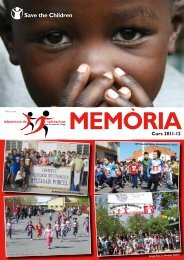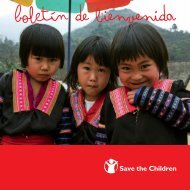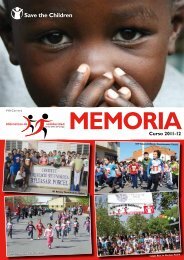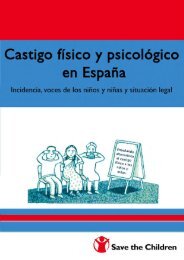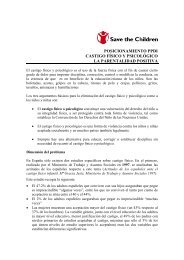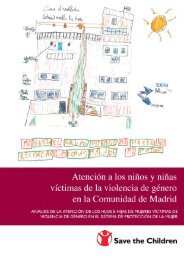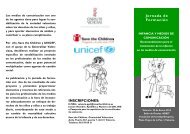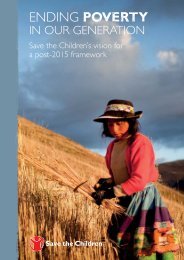Nutrition in the First 1,000 Days - Save the Children
Nutrition in the First 1,000 Days - Save the Children
Nutrition in the First 1,000 Days - Save the Children
You also want an ePaper? Increase the reach of your titles
YUMPU automatically turns print PDFs into web optimized ePapers that Google loves.
40 BreaStFeeDiNg iN <strong>the</strong> iNDUStrialiZeD WorlD<br />
australia<br />
time required. They may lose confidence if <strong>the</strong>ir baby has difficulty latch<strong>in</strong>g<br />
and <strong>the</strong>re is not a lactation consultant or support group <strong>the</strong>y can turn to for<br />
advice. If she has a demand<strong>in</strong>g work schedule, or lack of support at home, a<br />
mo<strong>the</strong>r may be forced to stop breastfeed<strong>in</strong>g or start us<strong>in</strong>g formula sooner than<br />
she would like.<br />
Breastfeed<strong>in</strong>g practices tend to vary widely across race, ethnicity, education<br />
and <strong>in</strong>come levels. Often, disadvantaged mo<strong>the</strong>rs breastfeed less that <strong>the</strong>ir more<br />
privileged counterparts.<br />
In <strong>the</strong> United States, more than 80 percent of Hispanics and Asians beg<strong>in</strong><br />
breastfeed<strong>in</strong>g, but only 74 percent of whites and 54 percent of blacks do so.150<br />
Women with higher levels of education are more likely to breastfeed, but racial<br />
differences are apparent across education levels. For example, even among women<br />
with a college degree, blacks are less likely to breastfeed than whites.151 There<br />
are sharp geographical differences as well: <strong>in</strong> eight states, most <strong>in</strong> <strong>the</strong> Sou<strong>the</strong>ast,<br />
less than 10 percent of <strong>in</strong>fants are exclusively breastfed at 6 months.152<br />
Similar trends are found <strong>in</strong> Australia, where Aborig<strong>in</strong>al mo<strong>the</strong>rs are less<br />
likely to breastfeed than non-Aborig<strong>in</strong>al mo<strong>the</strong>rs. Poorer, less educated, women<br />
breastfeed less than women with post-school qualifications. And mo<strong>the</strong>rs over<br />
30 are twice as likely to be breastfeed<strong>in</strong>g <strong>the</strong>ir babies at 12 months of age (28<br />
percent) compared with mo<strong>the</strong>rs aged 18-29 years (14 percent).153<br />
In <strong>the</strong> United K<strong>in</strong>gdom, <strong>the</strong> highest <strong>in</strong>cidences of breastfeed<strong>in</strong>g are found<br />
among mo<strong>the</strong>rs from managerial and professional occupations, those with<br />
<strong>the</strong> highest education levels and those age 30 and older.154 South Asian and<br />
black mo<strong>the</strong>rs are more likely than white mo<strong>the</strong>rs to breastfeed <strong>in</strong>itially, and<br />
to cont<strong>in</strong>ue breastfeed<strong>in</strong>g through six months. However, among mo<strong>the</strong>rs who<br />
breastfeed exclusively at birth, <strong>the</strong> fall-off is greater among South Asian and<br />
black mo<strong>the</strong>rs than among white mo<strong>the</strong>rs. For example, 70 percent of white<br />
mo<strong>the</strong>rs who nursed exclusively at birth were still exclusive at one week, compared<br />
with 62 percent of South Asian and 52 percent of black mo<strong>the</strong>rs. At<br />
four months, 12 percent of white mo<strong>the</strong>rs were still exclusively breastfeed<strong>in</strong>g,<br />
compared with 7 percent of South Asians and 5 percent of blacks.155




